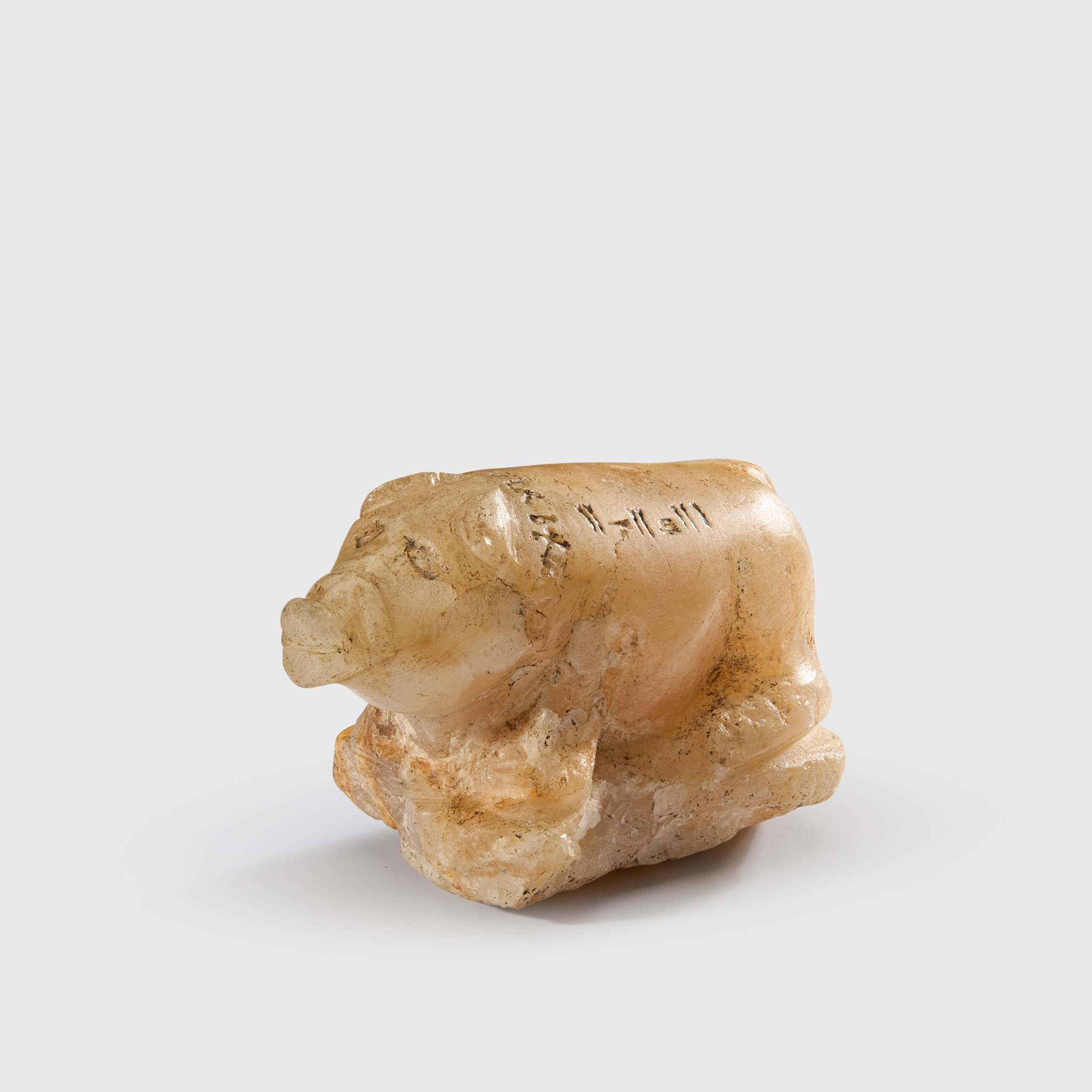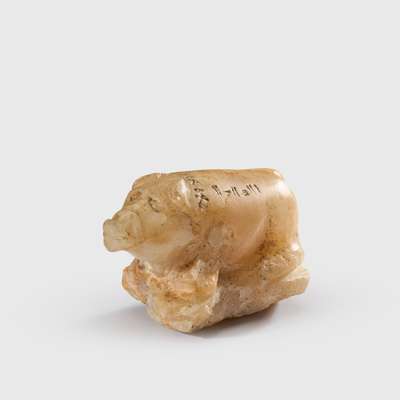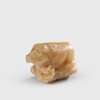
Lot 105

ASSYRIAN ALABASTER AMULET WITH CUNEIFORM
WESTERN ASIA, LATE 2ND TO EARLY 1ST MILLENNIUM B.C.


African & Oceanic Art, Natural History and Ancient Art
Auction: 30 July 2025 from 14:00 BST
Description
carved alabaster and bitumen, boar with a realistically sculpted snout and hollow eyes, hind legs bent, remains of polychromy on back, cuneiform inscription reading ‘Statuette of the Piglet, son of the Boar, may your virility last forever’, the surface contains trace elements of the original bitumen
Dimensions
8.6cm long
Provenance
From an old French collection of Monsieur C., thence by descent.
Subsequently in a Parisian private collection
Footnote
Carved from an irregular block of stone, this amulet depicts a pig, with inscriptions in Assyrian dialect arranged across three lines. The carver skillfully adapted the third line of text to the uneven surface of the stone, suggesting intentional accommodation of its natural shape. The carving remains incomplete, with the tusks, testicles, and bristles unrepresented. The surface would originally have been painted black, most likely using bitumen, in accordance with contemporary ritual practices.
The inscriptions include a dedication naming the figure as the ‘Statuette of the Piglet, son of the Boar,’ followed by an incantation: “May they stand up virilely!” The plural grammatical form suggests intended use for multiple patients, possibly within the practice of an exorcist. The pig, cited in ancient literature as a symbol of inexhaustible sexual vigor, fits within the therapeutic and ritual treatment of impotence.

